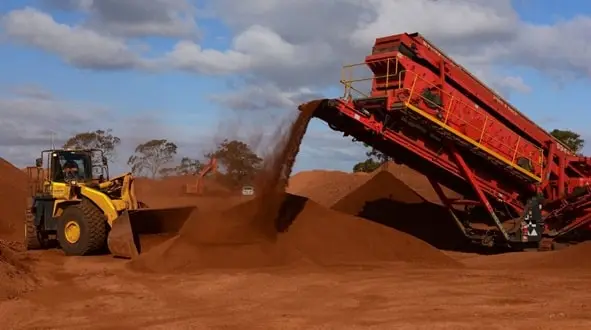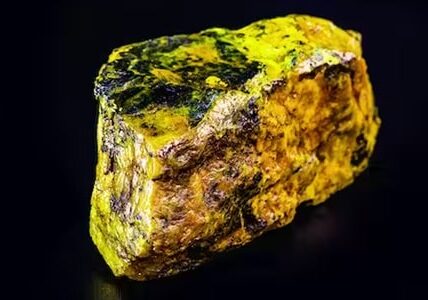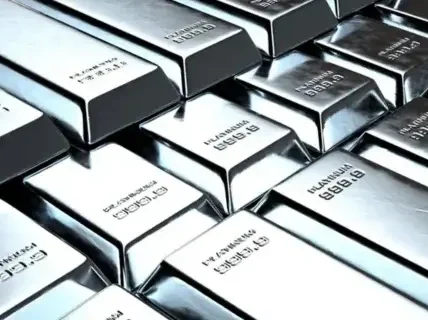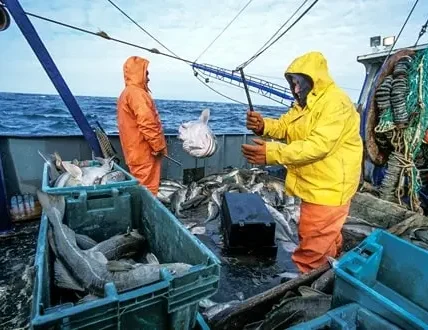The process of making Alumina, bauxite is the primary mineral to be used. Therefore, in the global aluminum manufacturing, bauxite has a great role to play. Along with the rising demand of aluminum, demand for bauxite is also on the rise. The entire process regarding unearthing the raw bauxite to shipping the product to their respective industries takes certain range of expertise and fineness. A good number of countries are now able to offer that kind of service. They are the greatest contributors in Bauxite production in the whole world. As of now, we present before you a list of 10 largest bauxite producers in this year.
1. Australia: 110,000 kilotons
World’s largest bauxite producer, Australia produces 110,000 kilotons yearly. Australian bauxite production accounts for 16% of global total, bolstering its market dominance. Unmatched bauxite reserves are Australia’s strength. The country’s remarkable output rests on these 2.3–2.7 billion-ton resources. Over 85% of these bauxite deposits are strategically located in southwest Western Australia’s Darling Range, with Boddington central to mining. Extraction involves massive open-cut mining. Mining near-surface bauxite using haul trucks and excavators is efficient. Australian bauxite mining has high output and a favorable global cost curve. Low-cost efficiency and little overburden clearing make the operations profitable.
2. Guinea: 7,400,000 kilotons
Guinea is delighted to produce 82,000 kilotons of bauxite, second globally. Guinea’s 7,400,000-kilotonne reserve base is vital to the world aluminum supply chain.Second-largest bauxite producer in the world shows the country’s significance. In 2022, Guinea produced 49 million metric tons of bauxite, furthering its global dominance since the 1960s. Major player Boké holds one-third of Guinea’s bauxite resources, estimated at over 2 billion tons.Export ports are accessible from Guinea’s west coast, strengthening its importance. Large open-cast mines are operated by Rusal, Alcoa, and CBG Bauxite. Railway conveyance of mined bauxite to Kamsar and Boké ports for international shipping is efficient. China, India, and Europe buy Guinean bauxite.
3. China: 1,000,000 kilotons
A global powerhouse, China produces 60,000 kilotons of bauxite. China has unrivaled aluminum industry strategic value despite its 1,000,000 kilotonne reserves. China, the world’s largest aluminum producer, feeds refineries and smelters near deposit sites with bauxite. The nation’s advanced resource acquisition strategy includes open-pit and underground mining. China buys bauxite from Australia, Indonesia, Guinea, and India to meet demand. The method balances local and foreign supply. China has strict environmental rules that promote ethical mining and restrict environmental degradation to regulate resource exploitation and ecological effect. China’s pledge supports aluminum resource sustainability.
4. Brazil: 35,000 kilotons
Brazil ranks fourth in bauxite production at 35,000 kilotons. Brazil’s 2,600,000 kilotons of bauxite demonstrate its market importance. Brazil’s biggest miner, Companhia Brasileira de Aluminio, mines open-cast at 30 locations. Brazil’s bauxite reserves and refining and smelting capabilities make it self-sufficient. Bauxite shipments to the Caribbean and Europe help Brazil’s economy. The industry’s rise mirrors Brazil’s “Mining Paradigm,” which boosts mineral output and competitiveness. Brazil’s safe and sustainable mining assures the industry’s longevity and enhances global bauxite output.
5. Indonesia: 23,000 kilotons
Indonesia ranks eighth in bauxite production at 23,000 kilotons. With 21 million tons, Indonesia became the fifth-largest bauxite producer in 2022. Kalimantan has most of the 1 billion tons. Large-scale open-cut operations by multinational and local miners boost the country’s worldwide reputation. Strategic location promotes Indonesia’s global competitiveness. Its closeness to China and India and inexpensive transportation make Port Kubar interesting. Indonesia boosts alumina and aluminum exports to boost local value. Environmental management and mining restrictions have improved, but problems remain. Industry struggles with land rights and community ties. Indonesia is a prominent bauxite producer due to its production capacity and resilience.
6. India: 22,000 kilotons
South Asian powerhouse India produces 22,000 kilotons of bauxite annually, sixth globally. India’s production meets global aluminum supply chain demands despite possessing 660,000 kilotons of reserves.Sixth-largest bauxite producer India produced 17 million tons in 2022. Over 60% of India’s 2.5 billion tons of bauxite lies in Odisha. India produces bauxite in 7 states with 7 smelters and 9 refineries.India relies on bauxite for aluminum production and consumption. Odisha produces 60% of India’s bauxite. National Aluminium Company and Hindalco’s massive open-cast mines contribute. Gujarat and Jharkhand produce several bauxites.India’s 50 bauxite mines utilize open-cast and underground mining methods based on topography for a diverse and successful extraction procedure. Near consumer hubs, railways bring materials to refineries and smelters.
7. Jamaica: 7,700 kilotons
Jamaica produces 7,700 kilotons of bauxite annually, ranking seventh worldwide. The nation’s 2,000,000 kilotons of deposits affect worldwide bauxite.Jamaica was among the top 10 bauxite producers in 2022, mining 3.9 million metric tons from 260 million tons of reserves. Mining began on the island in the 1940s when high-grade bauxite was found. Dragline-facilitated open-cast mining dominates Manchester and St. Elizabeth parishes’ 14 mines.Jamaica’s Clarendon Alumina and UC Rusal-led bauxite business is worldwide. Bauxite is delivered to Alpart via a slurry pipeline. This sector contributes for 15% of Jamaica’s GDP and drives exports.
8. Russia: 6,100 kilotons
Russia produces 6,100 kilotons of bauxite annually, sixth worldwide. Despite its meager 500,000 kilotonne reserves, Russia’s industrial relevance is expanding.Russia possesses 2.25 billion tons of bauxite in the northern Caucasus and southern Siberia. The nation produced 5 million tons of bauxite in 2022, ranking seventh. In Krasnodar and Irkutsk, strong earthmovers are used in open-pit mining.Russian bauxite manufacturer Rusal controls local production with multiple mines. Nation transports raw bauxite at modern ports. Russia imports and exports bauxite for alumina refinement.
9. Kazakhstan: 5,800 kilotons
Bauxite output in Kazakhstan is ninth in the world at 5,800 kilotons. The nation’s 160,000 kilotons of reserves imply strategic relevance and development potential in the ever-changing global aluminum market.Kazakhstan produced 4.4 million tons of bauxite in 2022, ranking eighth. This 160 million tons of bauxite is largely in Central and Akmola. Open-pit mining is used by state-owned “KazAk Bauxites,” which sells and refines alumina.Bauxite mining in Kazakhstan is limited by logistical and infrastructural constraints. Addressing global bauxite demand requires capacity growth, and the nation has numerous opportunities. The Kazakh government wants to recruit foreign companies and enhance transportation to promote bauxite mining. Kazakhstan’s strategy focuses bauxite and the global aluminum supply chain.
10. Vietnam: 4,000 kilotons
Vietnam produces 4,000 kilotons of bauxite yearly, eighth globally. Its 3,700,000-kilotonne reserve base distinguishes Vietnam. Vietnam might become a global aluminum powerhouse with its massive deposit.Despite possessing 5.8 billion tons of deposits, Vietnam produced 3.8 million tons of bauxite in 2022, ranking eighth. Quang Ninh, Nghe An, and Dak Nong are Vietnam’s primary northern and central coastal bauxite deposits. The state-owned VINACOMIN operates many big automated open-pit mines with excavators and dump trucks.
Conclusion
The top 10 countries mentioned here are making all the major changes in the infrastructure to make sure that the bauxite production process hits the highest mark. Also, they are making sure that the supply chain remains proper with smooth transportation options. All these have made these countries worthy of appreciation. Better shipments, finer bauxite production, and of course, a better manpower support, all these plans and setups have yielded the best results for these countries. The top 10 countries have created a great balance in the aluminum production now.
Related Topics
- Top 10 Largest Producer Of Coal In The World
- Top 10 Largest Producer Of Diamond In The World
- Top 10 Largest Producer Of Gold In The World

Brandon is the cheif editor and writer at WorldUnfolds.com. With a passion for storytelling and a keen editorial eye, he crafts engaging content that captivates and enlightens readers worldwide.















